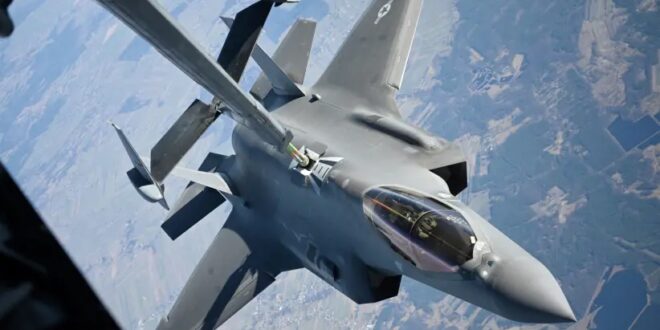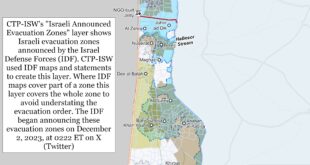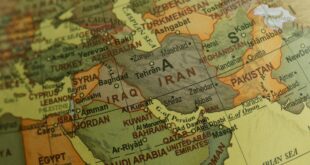While 74% of the US public supports working with NATO to establish a no-fly zone over Ukraine, prominent US leaders have cautioned against the move.
As war rages in Ukraine, Ukrainian President Volodymyr Zelensky has repeatedly called for a “no-fly zone” over Ukraine’s capital of Kyiv. The EU, NATO and the United States have denied all requests for the NFZ as of now, fearing that the move could exacerbate the conflict.
While three-fourths of the US public supports working with NATO to establish a no-fly zone over Ukraine per a Reuters/Ipsos poll, prominent American leaders have cautioned against the move, with Secretary of State Antony Blinken telling NBC’s Meet the Press on Sunday that US officials are trying to “end this war in Ukraine, not start a larger one.”
“[The] president’s been very clear about one thing all along as well, which is we’re not going to put the United States in direct conflict with Russia – not have… American planes flying against Russian planes or our soldiers on the ground in Ukraine,” Blinken said. “The president also has a responsibility to not get us into a direct conflict, a direct war with Russia, a nuclear power, and risk a war that expands even beyond Ukraine to Europe.”
With public and diplomatic opinion so divided, it is important to truly understand what is at stake as war is waged on Ukraine.
What is a no-fly zone?
A no-fly zone describes airspace in which specific aircraft are not allowed to fly. NFZs are meant to prevent attacks or surveillance over sensitive areas, such as military bases. For example, a surveillance drone would be shot down if it were flying over a designated no-fly zone, such as an air force base – as was the case at a US military base in Syria last December.
The implementation of an NFZ over Ukraine would mean that NATO forces would have to ground Russian aircraft flying over Ukrainian skies – by force if necessary.
Why are Western leaders hesitant to establish a no-fly zone over Ukraine?
“You don’t just say ‘that’s a no-fly zone’ – you have to enforce a no-fly zone,” former US Air Force Gen. Philip Breedlove told Foreign Policy magazine.
Experts and government officials alike have warned that enforcing an NFZ would require potentially confronting Russian military jets that are in the midst of military activities, which could not possibly be interpreted as anything aside from direct military conflict.
On Friday, NATO’s secretary-general Jens Stoltenberg warned that the introduction of a no-fly zone could lead to a “full-fledged war in Europe involving many more countries and causing much more human suffering.”
The fear of escalation is shared across Western nations and the political spectrum. Sen. Marco Rubio of Florida told host George Stephanopoulos on ABC’s This Week on Sunday that implementing a “no-fly zone” over Ukraine would result in World War III. “A no-fly zone has become a catchphrase. I’m not sure a lot of people fully understand what that means,” Rubio explained.
When Russian President Vladimir Putin announced Russia’s full-scale invasion of Ukraine in late February, he warned other countries that any attempt to interfere would lead to “consequences you have never seen” – an ominous, if not nuclear, threat.
Why does Ukraine want a no-fly zone?
Amid constant bombardment of civilian centers in Kyiv, Kharkiv, Mariupol and other densely populated urban cities, Zelensky has urged for the implementation of a no-fly zone over “significant parts” of the country.
The president has called the Russian government a “terrorist regime” as civilian outposts continue to be shelled by Russian missile strikes. The United Nations has estimated that nearly 400 civilians have died and more than 1.7 million have been displaced since the invasion began on February 24.
“All the people who will die starting from this day will also die because of you. Because of your weakness, because of your disunity,” a furious Zelensky told NATO members after his pleas to establish the no-fly zone were declined.
“If the West does this, Ukraine will defeat the aggressor with much less blood,” said the Ukrainian president, who remains in Ukraine’s capital of Kyiv despite offers to be evacuated by the US.
Pundits have warned that if his Ukraine initiative is successful, President Putin could potentially charge forward and target non-NATO nations in Eastern Europe, such as Moldova and Georgia – which Russia invaded in 2008.
Karin von Hippel, who was a nonpolitical senior adviser at the US State Department during the Obama administration, told NBC that if the Russian leader “starts to slowly expand his empire, there will be several other places that are in NATO that are going to be getting extremely stressed out.”
In place of a no-fly zone, the US, EU and NATO countries have pledged weapons and other military aid, with American plans to send MiG-29 fighter jets to Ukraine via Poland. Putin has warned that any country pledging arms to Ukraine would be considered a party to the conflict and has called the crippling sanctions imposed against Russian economic players an “act of war,” meaning Western countries may already be considered military allies of Ukraine.
The argument then is that if Russia is not confronted now, they will continue their aggression until Western countries will be left with no choice but to respond.
Have no-fly zones been implemented before?
Following the 1991 Gulf War, the United States along with other coalition nations established two NFZs in Iraq encompassing over half of the country’s area – restrictions that stayed in place until 2003, when the US invaded Iraq and removed its leader, Saddam Hussein.
This military action was not authorized by the United Nations, with then Secretary-General Boutros Boutros-Ghali calling the no-fly zones “illegal” in a February 2003 interview with John Pilger for ZNet. France withdrew from the operation in 1998, as the UN reported that in 1999 alone, some 144 civilians had been killed during coalition bombing efforts.
The United Nations Security Council imposed a no-fly zone over Bosnia and Herzegovina from 1993 to 1995 in the midst of the Bosnian wars, which proved successful in preventing significant use of air power by any side in the conflict and are credited with helping to bringing it to an end.
The UNSC further approved an NFZ in Libya as part of the 2011 military intervention. The Libyan National Army further imposed temporary no-fly zones in 2018 and 2019 during military conflicts, which is the only historical instance of a non-NATO imposed no-fly zone.
 Eurasia Press & News
Eurasia Press & News




